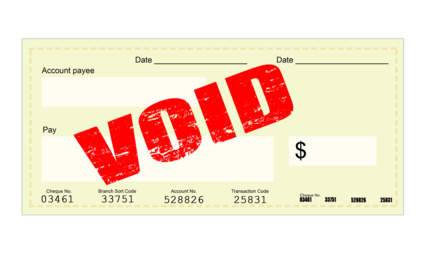Who Created Income Tax? - What to Know
No one likes paying income tax but as Benjamin Franklin said ‘nothing is certain except death and taxes’ so we’ve all come to accept it. But who created income tax, and what is the history behind it?
We take a look at this less than popular but enshrined part of working life.
Also read: How to Review Your Paychecks Before Filing Income Taxes
Abraham Lincoln & The Revenue Act
The idea of an income tax came from Abraham Lincoln who needed revenue to fund the massive military expense of the Civil War. In 1861, he convinced Congress to pass the Revenue Act, and it was signed into law in 1862.
Lincoln introduced the income tax with the ability to only tax the northern states and was able to institute it without passing a constitutional amendment.
Of course, he consulted his cabinet to make sure that the tax was constitutional and in a joint session of Congress on July 4th 1861 the details of the income tax law were determined.
This imposed a 3% tax on any income between $600 and $10,000. Any income over $10,000 was taxed at 5%. It was intended to be a temporary measure and the Act was allowed to expire more than 10 years later in 1872.
But this Act introduced income tax on a national level for the first time and also created the position of the first Commissioner of Internal Revenue. There was, unsurprisingly, a lot of opposition to the tax and in 1867 the tax rate was cut by Congress.
Also read: A Full Guide on How to Calculate Income Tax On A Pay Check
Panic Of 1893
The severe economic downturn of 1893 was sparked by the collapse of two of the country’s biggest employers of the time, the National Cordage Company and the Philadelphia and Reading Railroad.
When these two companies failed, panic set into the stock market. A lot of businesses had borrowed money to expand their operations and many had overextended themselves. As the financial crisis hit many banks started calling in loans.
This resulted in many companies declaring bankruptcy. During the panic of 1893 more than 15,000 businesses were forced to close.
The consequence was that unemployment rose to between 20-25% as workers were let go and could not pay rent or buy food. This prompted populist Democrats and progressive Republicans to join forces to press for a return of an income tax to help the economy.
In 1894 legislation was passed that created a tax of 2% on income above $4,000. However, this did not last very long and in 1895 the Supreme Court ruled that directly taxing the income of Americans was unconstitutional.
Also read: Mandatory Deductions From Your Paycheck

William H. Taft & A Supreme Court Ruling
Despite the Supreme Court ruling the desire for an income tax among progressives did not diminish. In 1909 when William Taft succeeded Theodore Roosevelt as president he had a difficult decision to make about income tax.
The idea in its original form had been declared unconstitutional by the Supreme Court. Taft was not enthusiastic about using income tax to restrain great personal wealth, but he also needed to reduce the country’s dependence on tariffs as a source of revenue.
However, he was also aware that the idea of income tax had broad support in both the Democratic and Republican parties.
Taft needed a way to both reduce tariffs and introduce an income tax without the authority of the Supreme Court’s previous ruling on the matter being undermined. He came up with a clever solution.
He attached a provision for income tax to a tariff bill in an attempt to introduce both corporate tax and tariff reform.
This combined tariff reduction legislation with a constitutional amendment allowed the federal government to collect income tax. The Supreme Court would not be able to overturn this. In July 1909 the 16th Amendment to the Constitution was passed.
Also read: Are Moving Expenses Tax Deductible?
Who Paid Early Income Tax?
With the passing of this amendment income tax was now a reality for Americans. It set a base rate of 1% on income but included an exemption of $3,000. This had the effect of exempting practically the entire middle class.
Those who had a personal income of over $20,000 faced an additional surtax of 6%. For the first few years after the introduction of income tax only 2% of households paid taxes.
The date of the first federal tax day was March 1st but in 1918 it was moved to March 15th. Finally in 1955, tax day was permanently moved to April 15th.
In 1917-18 the War Revenue Acts imposed a more steeply graduated form of income tax to fund war preparedness. Personal exemptions shrank to $1,000 for a single person and $2,000 for couples. Above these amounts tax was payable at 2% in 1917 and 12% in 1918.
Surtaxes of 1% for income above $5,000 and 65% for those earning over $1,000,000 were also imposed.
Also read: Are Home Improvements Tax Deductible?
Who Pays Income Tax Now?
The largest source of tax revenue comes from individual income tax and accounts for half of total receipts every year. This tax is levied on salaries and wages earned by individuals. It is also applied to income from investments and any other source of income.
Another tax, payroll tax, is collected automatically from paychecks through FICA. This stands for Federal Insurance Contributions Act and the money deducted pays for Medicare, social security, as well as unemployment benefits.
This is the second largest source of federal income and makes up one third of the total receipts for the financial year.
Wealthy Americans pay more in income taxes than lower income earners. However, taxpayers in the lower income groups pay more in payroll taxes than in income tax.

Final Thoughts
Income tax is a fact of life that many people dislike but is a necessity for the federal government’s revenue.
On the whole, the US tax system is progressive with top earners paying more in income taxes than lower income groups. Although, high income taxpayers do benefit from tax breaks.
Our pay stub generator allows you to create pay stubs in a simple and easy-to-use manner.
We hope this guide to income tax has been helpful.
















